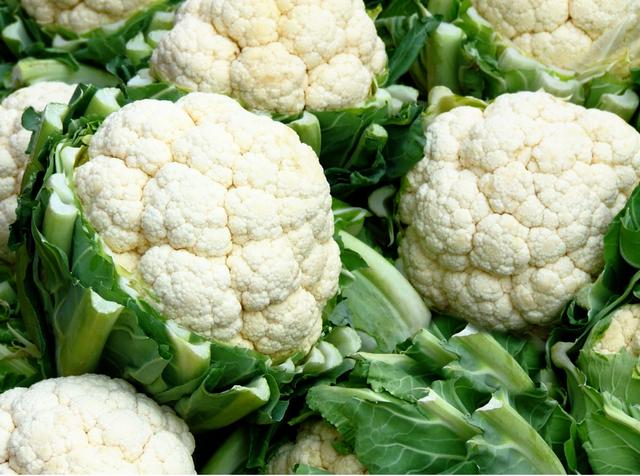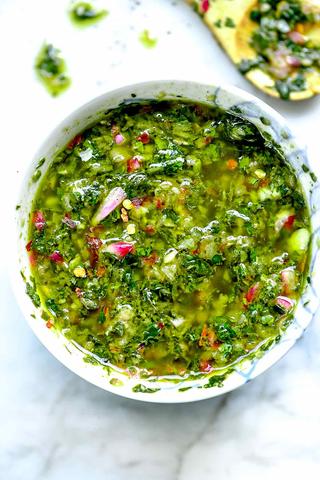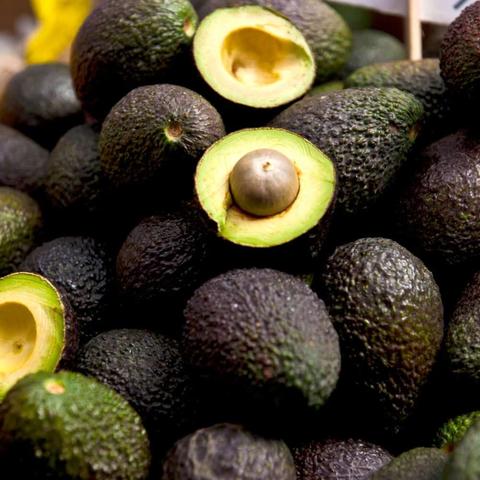
Discover the delectable taste of snapper, a sought-after fish known for its delicate flavor and firm texture. Dive into our exploration of this exquisite seafood, as we unravel the mouthwatering experience that awaits your taste buds.
1. “Exploring the Delicate and Sweet Flavor of Snapper: What Does It Taste Like?”

Snapper has a delicate and sweet flavor that is highly sought after by seafood enthusiasts. The taste of snapper can be described as mild, with a subtle sweetness that pairs well with a variety of ingredients. Whether you prefer a milder flavor or something more robust, there is a snapper species to suit every palate.
One of the defining characteristics of snapper is its firm texture. The flesh of snapper is typically moist and firm, providing a satisfying bite in various preparations. This texture makes snapper an ideal choice for grilling, baking, pan-frying, or even enjoying raw in sushi.
When it comes to cooking snapper, it’s important to ensure that you are getting true snapper and not mislabeled substitutes like tilapia or rockfish. While these substitutes may look similar to snapper, they lack the distinctive taste that sets snapper apart. At Fulton Fish Market, we take pride in our reputation for excellence and accuracy, ensuring that you receive authentic snapper every time you order.
In terms of health benefits, snapper is not only delicious but also nutritious. It is low in calories and high in protein, making it an excellent choice for those following low-carb or keto diets. Snapper is also rich in omega-3 fatty acids, which have been shown to support heart health and brain function.
It’s worth noting that some species of snapper are experiencing population pressure due to overfishing. To support sustainable fishing practices and contribute to the preservation of snapper populations, it is important to choose responsible suppliers like Fulton Fish Market.
In conclusion, exploring the delicate and sweet flavor of snapper is a culinary adventure worth embarking on. With its versatility in cooking methods and its ability to complement various flavors and ingredients, snapper can truly shine on your dinner plate. Whether you’re grilling American red snapper or pan-frying yellowtail snapper, each species offers its own unique taste and culinary potential. So why not indulge in the flavors of snapper and elevate your seafood dining experience?
2. “Unmistakable Flavors: Understanding the Unique Taste of Snapper”

Snapper is known for its unmistakable flavors that make it a favorite among seafood lovers. The unique taste of snapper comes from its diet of shellfish and smaller finfish, which imparts a delectable flavor into the fish’s meat.
The flesh of snapper is firm and moist, providing a satisfying texture in various preparations. It has a mildly sweet and delicate taste that pairs well with a range of ingredients, making it a versatile choice for different culinary creations.
Whether you prefer a mild or more robust flavor, there is a snapper species to suit every palate. From American red snapper with its sweet and nutty taste to Caribbean red snapper with its softer meat and smaller flakes when cooked, each species offers its own distinct traits and culinary potential.
Yellowtail snapper is another popular choice with its firm, white flesh and delicate flavor profile. It is frequently served grilled or fried in southern cuisine.
Mangrove snappers boast a slightly sweet flavor comparable to red snappers, and they are often used in dishes like ceviche and grilled preparations.
Mutton snappers are prized for their rich flavor, flaky texture, and large stature. They are perfect for fish stews or simply grilling with fresh herbs.
Vermillion snappers offer nutty flavors similar to red snappers but have more delicate flesh. They are excellent choices for baked recipes and fish soups.
In addition to their delicious taste, snappers also offer health benefits. They are low in calories, high in protein, and rich in omega-3 fatty acids that support heart health and brain function.
It is important to choose responsible suppliers when purchasing snapper to support sustainable fishing practices and ensure the preservation of snapper populations for future generations to enjoy. At [ShopifyDomain.fultonfishmarket.com], we are committed to providing you with seafood exclusively from well-managed wild fisheries and sustainable producers.
With their unmistakable flavors and versatility in the kitchen, snappers are a delightful choice for seafood enthusiasts. Explore the world of snapper and let their unique taste shine on your dinner plate.
3. “A Culinary Adventure: Discovering the Taste Profile of Snapper”

Snapper is a versatile fish that has been treasured in global cuisines for centuries. Its captivating culinary history spans across cultures and continents, showcasing its versatility and flavorful profiles. From the shores of the Caribbean to the bustling fish markets of Asia, snapper has found its way into a plethora of traditional dishes, each reflecting the unique flavors and cooking techniques of their respective regions.
Best known for its delicate, sweet flavor and firm texture, snapper is a sought-after choice for sushi enthusiasts. However, confusion between species and high costs have led some restaurants to mislabel tilapia or rockfish as snapper. While those substitutes may look similar to snapper, the unmistakable taste of true snapper sets it apart.
In this essential guide, we’ll explore different species of snapper and their culinary potential. Snappers belong to the Lutjanidae family and are most often found in warm waters of the Atlantic, Pacific, and Indian Oceans. They have defining characteristics such as a tapered head and tail with a wide middle, sharp teeth, and vibrant colors.
One popular misconception is that snapper is the same as sea bream (common varieties include dorade and porgy). While they may share some similarities, there are distinct differences between the two. Sea bream have a slightly stronger, meatier taste than snapper and have a more rounded body shape.
Snappers offer a delightful mix of flavors and textures. Their flesh is typically firm and moist, providing a satisfying texture in various preparations. Whether you prefer a mild or more robust flavor, there’s a snapper species to suit every palate.
The five most popular types of snapper in the US include:
1. American Red Snapper: Considered the prime choice by chefs around the globe, American red snapper boasts a sweet and nutty flavor with firm, pinkish meat.
2. Caribbean Red Snapper: Similar to American red snapper, Caribbean red snappers have reddish-orange skin and softer meat that provides slightly smaller flakes when cooked.
3. Yellowtail Snapper: Smaller in size, yellowtail snapper features yellow spots and stripes along with its vibrant namesake tail. It has a firm, white flesh and delicate flavor profile.
4. Mangrove Snapper: Also known as gray snappers or mangoes, these fish have a slightly sweet flavor comparable to red snappers. They are often used in a wide range of dishes, including ceviche and fish tacos.
5. Mutton Snapper: Prized for their rich flavor and flaky texture, mutton snappers have a single black spot on their backs and are often used in fish stews or simply grilled with fresh herbs.
Snapper is not only delicious but also packed with nutritional benefits. It is low in calories, high in protein (over 25g per 100g serving), and a rich source of omega-3 fatty acids that support heart health and brain function. The majority of snappers available in the US are wild-caught through methods such as longlining or purse seining.
To ensure the sustainability of snapper populations, it is important to choose responsible suppliers who support sustainable fishing practices. By doing so, we can contribute to the preservation and future growth of these species.
In conclusion, snapper offers a culinary adventure with its diverse flavors and textures. From sushi to traditional dishes from various cultures, this versatile fish can be enjoyed in countless ways. Whether you’re a seafood enthusiast or new to cooking fish, exploring the taste profile of different snapper species will surely enhance your dining experiences.
4. “From Nutty to Savory: Exploring the Diverse Tastes of Different Snapper Species”
When it comes to snapper, there is a wide range of flavors to explore. Each species of snapper has its own unique taste profile, offering seafood lovers a diverse culinary experience. From nutty to savory, here are some of the distinct flavors you can expect from different snapper species.
1. American Red Snapper: Known for its sweet and nutty flavor, American red snapper is a favorite among chefs worldwide. Its firm and pinkish meat is infused with the flavors of the shellfish it feeds on, giving it a rich and delicious taste. Whether enjoyed as sashimi or prepared as a whole fish, American red snapper never fails to impress with its delightful flavor.
2. Caribbean Red Snapper: Similar to its American counterpart, Caribbean red snapper also boasts a sweet flavor profile. However, it has a slightly softer meat that yields smaller flakes when cooked. This makes it perfect for pan-frying, baking, or grilling applications.
3. Yellowtail Snapper: With its firm and white flesh, yellowtail snapper offers a delicate flavor that pairs well with various ingredients. Its mild taste makes it versatile in different preparations, whether grilled with key lime in Florida or fried whole with plantains in Louisiana.
4. Mangrove Snapper: Also known as gray snappers or mangoes, mangrove snappers have a slightly sweet flavor comparable to red snappers. They have a robust texture that holds up well in various dishes such as ceviche, grilled preparations, and fish tacos.
5. Mutton Snapper: Prized for its rich flavor and flaky texture, mutton snapper is often used in fish stews, pan-frying, or simply grilled with fresh herbs. Its savory and sweet taste with notes of shellfish adds a depth of flavor to any dish.
Each snapper species offers its own unique culinary potential, allowing you to explore different flavors and textures in your seafood dishes. Whether you prefer the sweet and nutty taste of American red snapper or the delicate flavor of yellowtail snapper, there is a snapper species to suit every palate.
So next time you’re looking to elevate your seafood dining experience, consider trying out different snapper species and discover the diverse tastes they have to offer. From nutty to savory, these versatile fish are sure to delight your taste buds and add a touch of elegance to your meals.
5. “Unlocking the Delicious Secrets: What Makes Snapper a Sought-After Choice?”
5. “Unlocking the Delicious Secrets: What Makes Snapper a Sought-After Choice?”
Snapper has become a highly sought-after choice in the culinary world due to its unique and delicious qualities. This fish has a captivating culinary history that spans across cultures and continents, making it a versatile ingredient in various cuisines.
One of the reasons why snapper is so popular is its delicate, sweet flavor. The flesh of snapper is known for its mild and pleasant taste, which pairs well with a wide range of ingredients. Whether you prefer a milder or more robust flavor, there is a snapper species to suit every palate.
In addition to its delightful flavor, snapper also offers a firm texture that adds to its appeal. The meat of snapper is typically firm and moist, providing a satisfying mouthfeel in different preparations. This makes it an excellent choice for grilling, baking, pan-frying, or even enjoying raw in sushi.
Furthermore, snapper’s vibrant colors and ability to complement various spices and cooking styles make it a cherished ingredient in cultural celebrations and everyday dining. It features prominently in dishes from Caribbean escovitch fish to Chinese prosperity symbolism and Latin American favorites like ceviche and fish tacos.
However, it’s important to note that there can be confusion between different species of fish being labeled as snapper in some restaurants. Tilapia or rockfish may sometimes be mislabeled as snapper due to their similar appearance. While these substitutes may look similar, they lack the unmistakable taste that true snapper provides.
To ensure you receive authentic snapper every time you order, it’s essential to choose reputable suppliers like us who take pride in their centuries-old reputation for excellence and accuracy.
In conclusion, snapper’s captivating history, delicate flavor, firm texture, and versatility have made it an incredibly sought-after choice in the culinary world. Whether you’re enjoying it in traditional dishes from different cultures or exploring new recipes, snapper is sure to delight your taste buds and elevate your dining experience.
6. “Taste the Difference: How Does Snapper Compare to Other Fish Varieties?”

6. “Taste the Difference: How Does Snapper Compare to Other Fish Varieties?”
Snapper is a versatile and delicious fish that has a unique flavor and texture. It is often compared to other popular fish varieties, such as sea bream, tilapia, and rockfish. While these fish may look similar to snapper, there are distinct differences in taste and quality.
Sea bream, for example, has a slightly stronger and meatier taste compared to snapper. It also has a more rounded body shape and is known for its firm and flaky texture. Sea bream is often sought after for its unique flavor profile and is used in various culinary creations.
On the other hand, tilapia and rockfish are sometimes mislabeled as snapper in restaurants due to confusion between species or high costs. However, the taste of these substitutes cannot compare to the unmistakable flavor of true snapper. Snapper has a delicate, sweet flavor that pairs well with a range of ingredients.
When it comes to cooking techniques, snapper is generally easy to cook. Its firm texture holds up well in various preparations, whether it’s grilled, pan-fried, baked, or used in sushi. Snapper’s versatility makes it a sought-after choice for seafood lovers.
In conclusion, while there may be similarities in appearance between snapper and other fish varieties like sea bream or substitutes like tilapia or rockfish, the taste of true snapper is unmatched. Its delicate flavor, firm texture, and ability to complement different spices and cooking styles make it a standout ingredient in various cuisines around the world.
Sources:
– [Name_tracking_consentProviderShopifyDomain.fultonfishmarket.comPath/TypeFirst-partyRetention1 yearsPurposeTracking preferences]
– [Name_secure_customer_sigProviderShopifyDomainfultonfishmarket.comPath/TypeFirst-partyRetention1 yearsPurposeUsed in connection with customer login]
– [NamelocalizationProviderShopifyDomainfultonfishmarket.comPath/TypeFirst-partyRetention1 yearsPurposeShopify store localization]
– [Namecart_currencyProviderShopifyDomainfultonfishmarket.comPath/TypeFirst-partyRetention14 SessionPurposeThe cookie is necessary for the secure checkout and payment function on the website. This function is provided by shopify.com.]
– [Name_secure_session_idProviderShopifyDomainfultonfishmarket.comPath/TypeFirst-partyRetention24 hoursPurposeUsed in connection with navigation through a storefront.]
– [Name_shopify_sa_pProviderShopifyDomain.fultonfishmarket.comPath/TypeFirst-partyRetention30 minutesPurposeShopify analytics relating to marketing & referrals.]
– [Name_shopify_yProviderShopifyDomain.fultonfishmarket.comPath/TypeFirst-partyRetention1 yearsPurposeShopify analytics.]
– [Name_landing_pageProviderShopifyDomain.fultonfishmarket.comPath/TypeFirst-partyRetention14 SessionPurposeTracks landing pages.]
– [Name_shopify_sa_tProviderShopifyDomain.fultonfishmarket.comPath/TypeFirst-partyRetention30 minutesPurposeShopify analytics relating to marketing & referrals.]
– [Name_yProviderShopifyDomain.fultonfishmarket.comPath/TypeFirst-partyRetention1 yearsPurposeShopify analytics.]
– [Name_shopify_sProviderShopifyDomain.fultonfishmarket.comPath/TypeFirst-partyRetention30 minutesPurposeShopify analytics.]
– [Name_sProviderShopifyDomain.fultonfishmarket.comPath/TypeFirst-partyRetention30 minutesPurposeShopify analytics.]
– [Name_orig_referrerProviderShopifyDomain.fultonfishmarket.comPath/TypeFirst-partyRetention14 SessionPurposeTracks landing pages.]
– [Name_ga_5CR1GLHFN1ProviderGoogleDomain.fultonfishmarket.comPath/TypeFirst-partyRetention1 years Name_gatProviderGoogleDomain.fultonfishmarket.comPath/TypeFirst-partyRetention22 secondsPurposeCookie is placed by Google Analytics to filter requests from bots.]
– [Name_gidProviderGoogleDomain.fultonfishmarket.comPath/TypeFirst-partyRetention24 hoursPurposeCookie is placed by Google Analytics to count and track pageviews.]
– [Name_gaProviderGoogleDomain.fultonfishmarket.comPath/TypeFirst-partyRetention1 yearsPurposeCookie is set by Google Analytics with unknown functionality Name_gcl_auProviderGoogleDomain.fultonfishmarket.comPath/TypeFirst-partyRetention90 SessionPurposeCookie is placed by Google Tag Manager to track conversions.]
7. “Savoring the Delights: A Guide to Understanding Snapper’s Flavorful Profiles”

Snapper is a fish that offers a captivating culinary history with its versatility and flavorful profiles. It has been treasured in global cuisines for centuries, making its way into traditional dishes from various regions around the world. From the Caribbean to Asia, snapper has found its place on dinner tables, showcasing its unique flavors and cooking techniques.
One of the reasons why snapper is so popular is because it is generally easy to cook. Its delicate, sweet flavor and firm texture make it a sought-after choice for sushi enthusiasts. However, there has been some confusion between different species of fish, leading to mislabeling in some restaurants. Tilapia or rockfish may be incorrectly labeled as snapper, but their taste cannot compare to the unmistakable flavor of true snapper.
At Fulton Fish Market, we take pride in our reputation for excellence and accuracy. We ensure that you receive true snapper every time you order from us. In this essential guide, we will share all you need to know about snapper, including different species and cooking techniques that will make it shine on your dinner plate.
What Kind of Fish is a Snapper?
Snapper belongs to the Lutjanidae family and can be found in warm waters of the Atlantic, Pacific, and Indian Oceans. They are characterized by their tapered head and tail with a wide middle, sharp teeth, and vibrant colors. Snappers are carnivores and feed on both shellfish and smaller finfish, which contribute to their unique and delectable flavor.
Is Snapper The Same As Sea Bream?
No, snapper is not the same as sea bream (common varieties include dorade and porgy). While they may share some similarities, there are distinct differences between the two. Sea bream has a slightly stronger, meatier taste compared to snapper. They also have a more rounded body shape and are sought after for their firm and flaky texture. Both snapper and sea bream are popular choices in culinary circles, but their unique flavors and textures make each suitable for different types of dishes.
The Culinary Presence of Snapper
Snapper has a significant cultural presence in American and global cuisines. It is prominently featured in Caribbean dishes like escovitch fish, symbolizes prosperity in Chinese cuisine, and adds flavor to Latin American favorites like ceviche and fish tacos. In the United States, Red Snapper is celebrated for its sweet and nutty taste, often enjoyed during seafood festivals.
These versatile fish have woven themselves into culinary traditions worldwide, enriching the flavors and experiences of diverse dishes. Their vibrant colors, delicate flavors, and ability to complement various spices and cooking styles make them cherished ingredients in cultural celebrations and everyday dining.
Flavors and Textures of Snapper
Snappers offer a delightful mix of flavors and textures. While each species has its own characteristics, snappers generally have a mildly sweet and delicate taste that pairs well with a range of ingredients. The flesh of snapper is typically firm and moist, providing a satisfying texture in various preparations.
Whether you prefer a mild or more robust flavor, there’s a snapper species to suit every palate. This makes them a delicious choice for a wide variety of seafood lovers.
Popular Types of Snapper
There are over 100 types of snapper around the world, each with their own distinct traits and culinary potential. Here are the five most popular types of snapper in the US:
1. American Red Snapper: Considered the prime choice by chefs globally, American red snappers grow up to 24 inches and have a sweet and nutty flavor. They are versatile and can be enjoyed as sashimi or prepared as flaky island-style whole fish.
2. Caribbean Red Snapper: Similar to American red snapper, Caribbean red snappers have reddish-orange skin and softer meat. They are perfect for pan-frying, baking, and grilling.
3. Yellowtail Snapper: Smaller in size, yellowtail snappers span 12-16 inches and have firm, white flesh with a delicate flavor profile. They are frequently served grilled or fried in southern cuisine.
4. Mangrove Snapper: Also known as gray snappers or mangoes, these snappers average 14 inches long and have a slightly sweet flavor comparable to red snappers. They are used in various dishes such as ceviche, grilled preparations, and fish tacos.
5. Mutton Snapper: Known for their rich flavor and flaky texture, mutton snappers range from 20-30 inches in length. They are often used in fish stews, pan-frying, or simply grilled with fresh herbs.
Health Benefits of Snapper
Snapper not only tastes delicious but also offers several health benefits. It is low in calories and high in protein, making it an excellent choice for those following low-carb diets like keto or Whole30. Snapper is also rich in omega-3 fatty acids, which support heart health and brain function.
When choosing snapper, it is important to consider sustainability practices. At Fulton Fish Market, we prioritize responsible sourcing from well-managed wild fisheries and sustainable producers to ensure the preservation of snapper populations for future generations.
In conclusion, snapper is a versatile fish with unique flavors that have made it a staple in cuisines around the world. Whether you’re cooking American red snapper or trying out other species like yellowtail or mangrove snapper, you can expect a delightful mix of flavors and textures that will satisfy seafood lovers. Enjoy the deliciousness and health benefits of snapper while supporting sustainable fishing practices.
8. “Snapper’s Journey on Your Palate: Exploring Its Distinctive Tastes”

Snapper has a captivating culinary history that spans across cultures and continents. These fish have been treasured in global cuisines for centuries, showcasing their versatility and flavorful profiles. From the shores of the Caribbean to the bustling fish markets of Asia, snapper has found its way into a plethora of traditional dishes, each reflecting the unique flavors and cooking techniques of their respective regions.
Best of all, snapper is generally easy to cook. Snapper’s delicate, sweet flavor and firm texture make it a sought-after choice for sushi enthusiasts. Unfortunately, confusion between species and high costs have led some restaurants to mislabel tilapia or rockfish as snapper. While those substitutes’ flesh may look similar to a snapper, that snapper taste is unmistakable.
We take pride in our centuries-old reputation for excellence and accuracy, ensuring you receive true snapper every time you order. In this essential guide, we’ll share all you need to know about snapper, exploring different species and cooking techniques to let them be a star on your dinner plate.
What Kind of Fish is a Snapper?
Snapper belongs to the Lutjanidae family, most often found in warm waters of the Atlantic, Pacific, and Indian Oceans. Defining characteristics of snapper species include their tapered head and tail with a wide middle, sharp teeth, and vibrant colors. Snappers are carnivores, dieting on both shellfish and smaller finfish, which ultimately impart a unique and delectable flavor into the fish’s meat for our own taste buds to enjoy.
Is Snapper The Same As Sea Bream?
Snapper is not the same as sea bream (common varieties include dorade and porgy). While snapper and bream may share some similarities, there are distinct differences between the two. Sea bream have a slightly stronger, meatier taste than a snapper. They have a more rounded body shape than snapper and are often sought after for their firm and flaky texture. Both snapper and bream are popular choices in culinary circles, but their unique flavors and textures make each a standout option for different culinary creations.
The Culinary Presence of Snapper
Snapper has a significant cultural presence in American and global cuisines. They feature prominently in Caribbean dishes like escovitch fish, symbolize prosperity in Chinese cuisine, and add flavor to Latin American favorites like ceviche and fish tacos. In the United States, Red Snapper is celebrated for its sweet and nutty taste, often enjoyed during seafood festivals. These versatile fish have woven themselves into culinary traditions worldwide, enriching the flavors and experiences of diverse dishes. Their vibrant colors, delicate flavors, and ability to complement various spices and cooking styles make them cherished ingredients in cultural celebrations and everyday dining.
Flavors and Textures of Snappers
Snappers offer a delightful mix of flavors and textures. While each species has its own, snappers generally have a mildly sweet and delicate taste that pair well with a range of ingredients. The flesh of a snapper is typically firm and moist, providing a satisfying texture in various preparations. Whether you prefer a mild or more robust flavor, there’s a snapper species to suit every palate, making them a delicious choice for a wide variety of seafood lovers.
Popular Types of Snapper
The world of snapper is as diverse as it is delicious. There are over 100 types of snapper around the world, each with their own distinct traits and culinary potential. Here are the five most popular types of snapper in the US.
1. American red snapper (also known as northern red snapper) – considered the prime snapper choice with a sweet and nutty flavor.
2. Caribbean red snapper (or southern red snapper) – slightly softer meat than American red snapper, ideal for pan-frying, baking, and grilling.
3. Yellowtail snapper – versatile with firm, white flesh and delicate flavor profile, commonly served grilled or baked.
4. Mangrove snappers (commonly called gray snappers or mangoes) – slightly sweet flavor comparable to red snappers, used in various dishes including ceviche and fish tacos.
5. Mutton snappers (also known as mutton fish, king snapper, or virgin snapper) – rich flavor with a flaky texture, great for fish stews and grilling.
Health Benefits of Snapper
Not only is snapper delicious, but it also packs a nutritious punch. Snappers are low-calorie fish and rich sources of protein. They are also high in omega-3 fatty acids, which support heart health and brain function. With no carbohydrates and endless cooking methods, snapper is a perfect solution for keto, Whole30, and other low-carb diets.
Sustainability of Snapper
Several snapper species are experiencing population pressure due to overfishing, leading to concerns about their sustainability. In response, government agencies have implemented strict regulations to manage snapper catch and ensure a healthy future for all species. It is vital to choose responsible suppliers in order to actively support sustainable fishing practices and contribute to the preservation and future growth of snapper populations.
We are proud to be a responsible supplier for snapper, committed to providing you with seafood exclusively from well-managed wild fisheries and sustainable producers.
Overall, exploring the distinctive tastes of different types of snappers can open up a world of culinary possibilities. From delicate and mild to rich and flavorful, snapper offers something for every seafood lover. So go ahead, embark on a journey with snapper and let its unique flavors take center stage on your dinner plate.
9. “The Versatile Tastes of Snapper: From Mild and Delicate to Robust and Savory”

Snapper is a versatile fish that offers a range of tastes, from mild and delicate to robust and savory. Each species of snapper has its own distinct flavor profile, allowing for a variety of culinary creations. Whether you prefer a subtle taste or a more intense flavor, there is a snapper species to suit every palate.
One of the most popular types of snapper is American red snapper. This species is known for its sweet and nutty flavor, which comes from its shellfish-dense diet. American red snapper is highly sought after by chefs around the world and can be enjoyed in various preparations, such as sashimi or whole fish dishes.
Caribbean red snapper is another delicious option. While similar to American red snapper in appearance, taste, and texture, Caribbean red snappers have slightly softer meat and smaller flakes when cooked. They are often used in pan-frying, baking, and grilling applications.
Yellowtail snapper offers a firm, white flesh with a delicate flavor profile. It is a versatile option that can be grilled with key lime or fried whole with plantains. Yellowtail snappers are also delicious when baked or pan-seared with butter.
Mangrove snappers have a slightly sweet flavor comparable to red snappers. They boast a robust texture and are commonly used in ceviche, grilled preparations, and fish tacos. With their distinct black stripe running through their eyes above their long snouts, mangrove snappers are easily recognizable.
Mutton snappers are prized for their rich flavor, flaky texture, and large stature. They have a savory and sweet taste with notes of shellfish. Mutton snappers are often used in fish stews, pan-frying, or simply grilled with fresh herbs.
Vermillion snappers stand out with their vibrant rosy color and blood-red eyes. Although they are more slender than red snappers, vermillion snappers offer comparable nutty flavors. They are a popular choice for baked recipes and fish soups due to their delicate flesh.
In addition to their delicious taste, snappers also offer numerous health benefits. They are low in calories and high in protein, making them an excellent choice for those following low-carb diets. Snappers are also rich in omega-3 fatty acids, which support heart health and brain function.
When choosing snapper, it is important to consider sustainability. Overfishing has put pressure on some snapper species, leading to concerns about their populations. By choosing responsible suppliers who prioritize sustainable fishing practices, you can contribute to the preservation and future growth of snapper populations.
Overall, snapper is a versatile and flavorful fish that can be enjoyed in a variety of dishes. Its unique taste profiles make it a favorite ingredient in cuisines around the world, adding depth and richness to both traditional and contemporary recipes.
10. “Snapper’s Signature Flavor: Unveiling Its Captivating Culinary Characteristics”

Snapper is a fish with a captivating culinary history that has been treasured in global cuisines for centuries. It is known for its versatility and flavorful profiles, making it a popular choice in dishes from various cultures and regions.
One of the reasons snapper is highly regarded is because of its delicate, sweet flavor and firm texture. These qualities make it a sought-after choice for sushi enthusiasts. However, it’s important to note that there has been confusion between snapper species and substitutes like tilapia or rockfish. While these substitutes may look similar to snapper, the distinct taste of snapper cannot be replicated.
At Fulton Fish Market, we take pride in our reputation for excellence and accuracy. We ensure that you receive true snapper every time you order from us.
In this essential guide to snapper, we will explore different species of snapper and their culinary potential. Snappers belong to the Lutjanidae family and are most commonly found in warm waters of the Atlantic, Pacific, and Indian Oceans. They have distinctive characteristics such as a tapered head and tail, sharp teeth, and vibrant colors.
While some may confuse snapper with sea bream (such as dorade or porgy), they are not the same fish. Sea bream have a slightly stronger, meatier taste compared to snapper. They also have a more rounded body shape.
Snappers have significant cultural presence in American and global cuisines. They feature prominently in Caribbean dishes like escovitch fish, symbolize prosperity in Chinese cuisine, and add flavor to Latin American favorites like ceviche and fish tacos. In the United States, Red Snapper is celebrated for its sweet and nutty taste.
There are over 100 types of snapper around the world, each with their own distinct traits and culinary potential. Some of the most popular snapper species in the US include American red snapper, Caribbean red snapper, yellowtail snapper, mangrove snapper, mutton snapper, and vermillion snapper.
Snappers offer a delightful mix of flavors and textures. They have a mildly sweet and delicate taste that pairs well with a range of ingredients. The flesh of a snapper is typically firm and moist, providing a satisfying texture in various preparations.
In addition to its delicious taste, snapper also offers several health benefits. It is low in calories and rich in protein, making it suitable for various diets including keto and Whole30. Snappers are also high in omega-3 fatty acids, which support heart health and brain function.
When choosing snapper, it is important to consider sustainability practices. Overfishing has led to population pressure on some snapper species. Government agencies have implemented regulations to manage catch and ensure the future sustainability of all species. At Fulton Fish Market, we are committed to providing seafood exclusively from well-managed wild fisheries and sustainable producers.
Whether you’re a sushi enthusiast or looking to explore different culinary creations with snapper, our essential guide will help you make informed choices when it comes to selecting and cooking this versatile fish.
11. “A Feast for Your Senses: Exploring the Taste Spectrum of Snapper”
Snapper is a fish that offers a wide range of flavors, making it a true feast for your senses. Each species of snapper has its own unique taste profile, allowing you to explore different flavors and find your favorite.
One popular snapper species is the American red snapper. It has a sweet and nutty flavor that is highly sought after by chefs around the world. The meat of the American red snapper is firm and pinkish, making it perfect for sashimi or whole fish preparations with island-style flavors.
Caribbean red snapper, on the other hand, has a slightly softer meat compared to its American counterpart. It offers a milder flavor but still retains the distinct taste that makes snapper so special. Caribbean red snappers are often pan-fried, baked, or grilled to bring out their delicate flavors.
Yellowtail snapper is another popular choice among seafood lovers. With its firm, white flesh and delicate flavor profile, yellowtail snapper is incredibly versatile in the kitchen. It can be grilled with key lime for a taste of Florida or fried whole with plantains for a Louisiana-inspired dish.
Mangrove snappers have a slightly sweet flavor similar to red snappers but with their own unique characteristics. They are often used in ceviche recipes in Central America or grilled for a more robust texture. Mangrove snappers can also be used in fish tacos or other dishes that require a flavorful and flaky fish.
Mutton snappers are known for their rich flavor and large size. With savory and sweet notes of shellfish, mutton snappers are perfect for fish stews, pan-frying, or simply grilling with fresh herbs. Their distinct taste sets them apart from other types of snapper.
Lastly, vermillion snappers offer comparable nutty flavors to red snappers but with a more delicate flesh. They are often used in baked recipes or fish soups, showcasing their vibrant rosy color and forked tail.
No matter which species of snapper you choose, you can expect a delightful mix of flavors and textures. From the sweet and nutty American red snapper to the delicate and versatile yellowtail snapper, there is a snapper species to suit every palate. So why not embark on a culinary adventure and explore the taste spectrum of snapper?
In conclusion, snapper has a delicious and mild flavor that is often compared to other popular white fish such as cod or halibut. Its firm texture and slightly sweet taste make it a versatile ingredient in various culinary preparations. Whether grilled, baked, or pan-fried, snapper offers a delightful dining experience for seafood lovers.
Learn More About Grilling
If you want to learn more about grilling, check out these other helpful resources!






